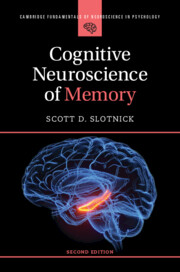Refine search
Actions for selected content:
345 results
Preface to parasites of the genital tract: short- and long-term consequences
-
- Journal:
- Parasitology , First View
- Published online by Cambridge University Press:
- 01 December 2025, pp. 1-8
-
- Article
-
- You have access
- Open access
- HTML
- Export citation
9 - Equality
- from Part III - Statutory Regulation of the Employment Relationship
-
- Book:
- Labour Law
- Published online:
- 02 October 2025
- Print publication:
- 20 November 2025, pp 329-382
-
- Chapter
- Export citation
7 - Who Is a Threat to Our Values?
- from Part III - “Law and Order”
-
- Book:
- Justice, Equity, Diversity, and Inclusion in the United States
- Published online:
- 19 November 2025
- Print publication:
- 30 October 2025, pp 147-174
-
- Chapter
-
- You have access
- Open access
- HTML
- Export citation
Jane Austen, Law Professor, on Bar Prep: Four Stress-free Lessons on Estates in Land and Family Law
-
- Journal:
- International Journal of Legal Information / Volume 53 / Issue 3 / Winter 2025
- Published online by Cambridge University Press:
- 20 October 2025, pp. 199-209
- Print publication:
- Winter 2025
-
- Article
- Export citation
6 - Democratic Intimacies: Jokes, Sex, and Ta’arof
-
- Book:
- Tied Up in Tehran
- Published online:
- 28 September 2025
- Print publication:
- 16 October 2025, pp 111-141
-
- Chapter
- Export citation
Plasma 25-hydroxyvitamin D concentrations, vitamin D deficiency and mortality in community-dwelling Japanese adults
-
- Journal:
- British Journal of Nutrition / Volume 134 / Issue 8 / 28 October 2025
- Published online by Cambridge University Press:
- 09 October 2025, pp. 634-644
- Print publication:
- 28 October 2025
-
- Article
-
- You have access
- Open access
- HTML
- Export citation
Just Like a Woman
-
- Article
-
- You have access
- Open access
- HTML
- Export citation
Making Something Out of “Much Ado About Nothing”
- Part of
-
- Journal:
- Public Humanities / Volume 1 / 2025
- Published online by Cambridge University Press:
- 23 September 2025, e138
-
- Article
-
- You have access
- Open access
- HTML
- Export citation
2 - Tortillas and Menstruation
-
- Book:
- The Making of Revolutionary Feminism in El Salvador
- Published online:
- 28 October 2025
- Print publication:
- 18 September 2025, pp 107-147
-
- Chapter
- Export citation
Chapter 5 - To Put It Delicately
- from Part II - Understanding Cultural Norms and References
-
- Book:
- Lost in Automatic Translation
- Published online:
- 08 October 2025
- Print publication:
- 21 August 2025, pp 69-93
-
- Chapter
- Export citation
5 - Women
-
- Book:
- Making Antifascist War
- Published online:
- 28 October 2025
- Print publication:
- 14 August 2025, pp 162-190
-
- Chapter
- Export citation
6 - Defining Disfigurement
-
- Book:
- Appearance, Disability and the Law
- Published online:
- 31 July 2025
- Print publication:
- 14 August 2025, pp 77-100
-
- Chapter
- Export citation
Incorporating the gender dimension into infectious disease research: how is Parasitology progressing?
-
- Journal:
- Parasitology , First View
- Published online by Cambridge University Press:
- 13 August 2025, pp. 1-7
-
- Article
-
- You have access
- Open access
- HTML
- Export citation
Chapter 5 - Love Your Neighbor (Leviticus 17–22)
-
- Book:
- The Theology of the Book of Leviticus
- Published online:
- 18 July 2025
- Print publication:
- 07 August 2025, pp 157-202
-
- Chapter
- Export citation
Chapter 8 - Our Rights to Ourselves and Others
-
-
- Book:
- Kant's Lectures on Political Philosophy
- Published online:
- 18 July 2025
- Print publication:
- 07 August 2025, pp 142-160
-
- Chapter
- Export citation
What could it mean to say that sex is eternal?
-
- Journal:
- Religious Studies , First View
- Published online by Cambridge University Press:
- 06 August 2025, pp. 1-14
-
- Article
-
- You have access
- Open access
- HTML
- Export citation
Impulsivity and aggression in suicide across age and sex: case–control study
-
- Journal:
- BJPsych Open / Volume 11 / Issue 5 / September 2025
- Published online by Cambridge University Press:
- 01 August 2025, e167
-
- Article
-
- You have access
- Open access
- HTML
- Export citation
Effect of vitamin D supplementation for major adverse cardiovascular events: a meta-analysis based on randomised controlled trials
-
- Journal:
- British Journal of Nutrition / Volume 134 / Issue 2 / 28 July 2025
- Published online by Cambridge University Press:
- 21 July 2025, pp. 124-133
- Print publication:
- 28 July 2025
-
- Article
- Export citation

Cognitive Neuroscience of Memory
-
- Published online:
- 12 June 2025
- Print publication:
- 30 January 2025
-
- Textbook
- Export citation
Chapter 8 - Reading against the Grain
-
- Book:
- The Strange History of Samuel Pepys's Diary
- Published online:
- 24 April 2025
- Print publication:
- 24 April 2025, pp 151-176
-
- Chapter
- Export citation
